|
Related FAQs: Nephtheids, Nephtheids 2, Dendronephthya, Neptheid Identification, Nephtheid Behavior, Nephtheid Compatibility, Nephtheid Selection, Nephtheid Systems, Nephtheid Feeding, Nephtheid Disease, Nephtheid Reproduction/Propagation,
Soft Coral Propagation,
Soft Coral Health,
Related Articles: Dendronephthya and
Scleronephthya, Corals to Avoid, by Adam Blundell, Soft Corals, Order Alcyonacea,
/The Best Livestock For Your Reef Aquarium:
Soft Corals of the Family
Nephtheidae,
Part 1
To: Part 2,
Part 3, Part 4,
|
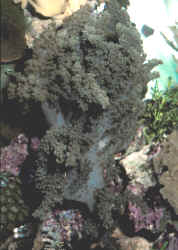
|
|
By Bob Fenner |
Capnella sp.
|
Genus Capnella Gray 1869: (Kenya) Tree Coral. Have small
arborescent headed colonies, with polyps that are non-retractile.
| Capnella sp. Indo-Pacific.
Polyps found on small branches at end of only a few branchings, and
are not retractable. Have club-shaped sclerites within. Often
misidentified as Litophytons. Aquarium photo and close-up. |
 
|
Bigger PIX:
The images in this table are linked
to large (desktop size) copies. Click on "framed" images
to go to the larger size. |
|
%20MD.JPG)
|
| Capnella imbricata (Quoy & Gaimard
1833). Distinctive compact colonies with short branches that occur
straight up from their basal stalk. Polyps are crowded and
don't retract, restricted to terminus of branches. Western
Pacific; New Guinea, Philippines. N. Sulawesi pix. |
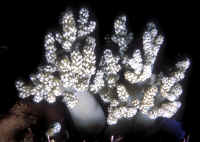 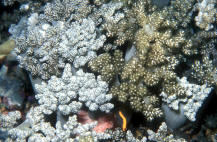
|
Bigger PIX:
The images in this table are linked to large (desktop size) copies.
Click on "framed" images to go to the larger size. |
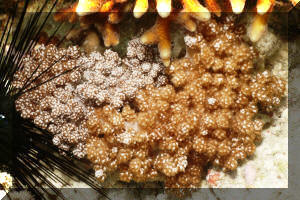
%20MD.JPG)
%20MD.JPG) |
Genus Chironephthya:
Bigger PIX:
The images in this table are linked
to large (desktop size) copies. Click on "framed" images
to go to the larger size. |
|
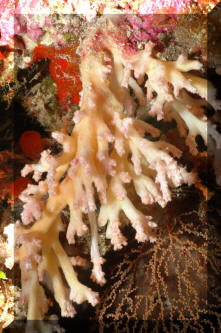
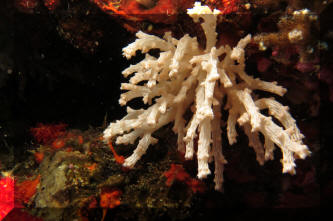
|
Genus Dendronephthya
Kukenthal 1905: Strawberry Corals. Greatly bunched, bushy colonies.
Common in many areas of the tropical Indo-Pacific. Lack Zooxanthellae,
dependent of nano-plankton and dissolved organics for food. Some grow
exposed, many others in caves, sheltered settings, mostly "upside
down". Some 250 species are said to exist... not able to be
discerned in the field... must be microscopically examined.
| Dendronephthya sp. Indo-West Pacific. Polyps
in groups of varying number on the distal branches of colonies.
These are supported by internal and surface (visible) sclerites.
Feed on very fine plankton and dissolved organic matter. Very
difficult to maintain in captivity. Close up at right in the Red
Sea, two below in the Andaman Sea off of Thailand and one in Fiji
in a typical (upside down) orientation in a cave. |
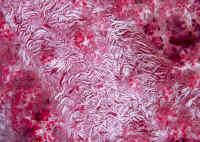
|
To: Part 2,
Part 3, Part 4,

